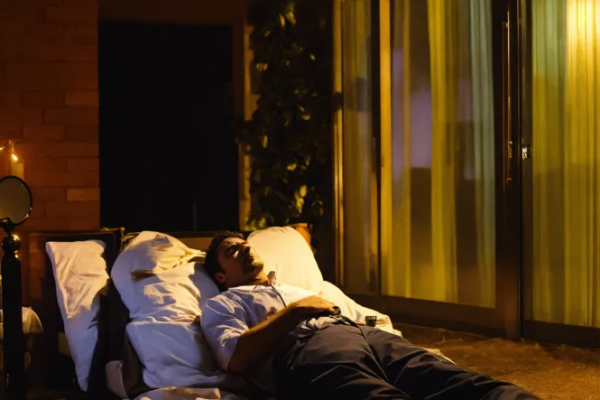
Our bodies run on an internal clock called the circadian rhythm that regulates when we feel awake, hungry, and tired over a 24-hour cycle. Maintaining a healthy circadian rhythm is crucial for getting good sleep, improved cognition and productivity, better weight management, and overall health. But with increasingly busy modern lifestyles filled with artificial light, digital stimulation, inconsistent sleep schedules, jet lag from travel, and shift work throwing off our natural rhythms, resetting our body clocks has become more important than ever.
What Is the Circadian Rhythm and Why Is It Important?
The circadian rhythm is a natural, internal process that regulates our sleep-wake cycles and repeats roughly every 24 hours. This biological clock is controlled by a part of the brain called the suprachiasmatic nucleus (SCN), located in the hypothalamus, which responds to light and darkness in our environment. When light enters our eyes in the mornings, it signals the SCN to tell the body to feel more alert, increase body temperature and blood pressure, while suppressing the feel-good hormone melatonin to keep us awake. As nighttime approaches, the SCN triggers the release of melatonin which makes us feel sleepy.
Along with sleep cycles, the circadian clock has influence over hormone release, body temperature, digestion, and many other bodily functions that follow a daily rhythmic pattern. Maintaining synchronized circadian rhythms between sleep and other processes is essential for:
Healthy, Restorative Sleep
Aligned circadian rhythms promote better quality sleep at night, more daytime alertness, and reduced insomnia. Disruption of these cycles through shift work or jet lag can negatively impact the quantity and restfulness of sleep.
Improved Mental Performance
Studies show that cognitive functions like learning, memory, alertness, verbal skills, and problem-solving ability fluctuate at different times of the day based on circadian rhythms. Matching demanding mental activities with our peak circadian performance times can boost productivity.
Metabolic Health
Our circadian clocks regulate the release of appetite and hunger hormones. Disrupting the normal timing of eating patterns and fasting periods may negatively impact weight, blood sugar levels, and digestive health.
Disease Prevention
Chronically disrupted circadian rhythms caused by irregular sleep-wake cycles are associated with increased risks for medical conditions like obesity, diabetes, high blood pressure, heart disease, mood disorders, and cognitive decline. Aligning lifestyle habits to daily circadian rhythms can support long-term wellness.
Subjective Wellbeing
Getting good sleep, having more energy during the day, and feeling in sync with your body’s daily rhythms simply makes people feel healthier and happier in life.
What Causes Circadian Rhythm Disruption?
Many aspects of modern living can throw off the natural synchronization between our internal clocks and external environment, including:
Artificial Light and Electronics Overuse
Exposure to bright indoor lights, blue light from phones/TVs, and late-night screen time suppresses melatonin and delays our sense of sleepiness. This light pollution shifts circadian timing later and makes it harder to wake up early.
Inconsistent Sleep Schedules
Varying bedtimes/waketimes on weekdays vs weekends, pulling all-nighters to cram, or losing sleep due to lifestyle demands prevents the circadian clock from establishing healthy rhythmic patterns. Jet lag also misaligns internal timing.
Medical Conditions and Medications
Certain health issues like sleep apnea or Alzheimer’s as well as steroids, blood pressure, and ADHD medications can impact circadian regulation and disrupt sleep.
Shift Work and Overnight Hours
Working on rotating schedules that change weekly or working very late/early hours when we would normally sleep counteracts natural circadian processes which expect sleep at night.
Age-Related Changes
As we get older, production of melatonin decreases making it harder to sleep at night and more difficult to synchronize circadian timing. Exposure to more morning light and earlier bedtimes can help seniors.
Signs Your Circadian Rhythm Is Out of Alignment
Imbalanced circadian function manifests in many ways, including:
– Difficulty falling or staying asleep at night, frequent waking
– Excessive daytime sleepiness, needing naps to get through the day
– Not feeling fully awake first thing in the morning, hitting snooze habitually
– Experiencing fatigue and low energy in the afternoon
– Feeling hungry at odd times or excessive late-night snacking
– Irritability, anxiety, or depressed mood at certain periods in the day
– Poor concentration, motivation, and productivity during attempted work times
Paying attention to when you experience energy highs and lows versus times when you feel most sleepy can reveal if your circadian rhythms are properly aligned with day/night cycles.
Tips to Reset Your Circadian Clock
If you suspect your circadian rhythms are imbalance, try these proven methods to resynchronize your body’s master clock:
Regulate Light Exposure
– Upon waking, get some natural sunlight exposure for at least 30-60 minutes to signal to your SCN that it’s time to be alert
– Avoid bright indoor lights after sundown and limit electronics/TV 2 hours before bedtime
– Install blackout curtains, wear blue light blocking glasses, adjust devices to lower brightness and warmer tones at night to support melatonin release
Develop Consistent Sleep/Wake Times
– Try to go to bed and get up at the same times every day, even on weekends and vacations, to reinforce healthy circadian cycles
– Wake up naturally with light if possible, rather than an alarm
– Relax pre-bedtime activities like reading in dim lighting to wind down each night
Time Meals Appropriately
– Eat bigger meals earlier in the day and avoid heavy foods within 2-3 hours of bedtime to support circadian metabolic function
– Overnight fasting for 11-12 hours between dinner and breakfast helps sustain healthy bio rhythms
Exercise Strategically
– Getting in bright outdoor light exposure in the mornings may have extra circadian benefits
– Exercising too late in the evenings, however, may make it harder to wind down before bed
Consider Supplements
– Taking melatonin 2-3 hours before your target bedtime helps cue your brain that it’s time to sleep
– Speak to your doctor before starting any new supplements
Be patient and persistent in following circadian hygiene basics daily. It can take weeks to months to fully realign your body’s master clock, but you should notice incremental improvements in sleep, energy, mood, and health. Consider consulting a sleep specialist if you continue having symptoms of circadian misalignment despite diligently supporting healthy bio rhythms. Investing in keeping your internal timekeeping systems in sync pays dividends through better performance, wellbeing, and longevity.
Heading 2: Evaluate Your Chronotype for Personalized Rhythm Optimization
Along with the influence of external cues from sunlight and artificial lighting, research shows our innate chronotypes also heavily dictate individual circadian patterns. Chronotype refers to whether someone’s internal clock and sleep preferences skews towards being an early bird “lark” versus a night owl “owl”. Most people fall somewhere in the middle as neither extreme. Understanding your inborn chronotype enables customizing circadian support strategies.
Signs you may lean more towards an evening chronotype include:
– Peak mental/physical alertness occurs later in the afternoons/evenings
– You struggle with early morning rising and feel groggy first thing in the morning
– Need a few hours after waking up before you feel fully productive
– Prefer later bedtimes (midnight or beyond) when allowing your body to dictate sleep times
Whereas signs of an early chronotype include:
– Waking up very early, sometimes even before sunrise, without an alarm
– Feeling energized, clear-headed and ready to take on activities first thing in morning
– Preferring to go to bed early in the evenings (9 pm or earlier)
– Hitting an energy slump in the early evenings
If you do recognize yourself as more of an extreme early or late chronotype, you can make adjustments to better align daily habits like light exposure, activity timing, and sleep schedules to match your personal bio rhythm patterns. This may mean shifting your work hours earlier or later when feasible, or being disciplined about bedtimes to keep sleep regular despite innate preferences.
There are also chronotype questionnaires available online or through sleep doctors that can provide more definitive assessment on whether you are an early, late or neutral/intermediate type. Understanding your chronotype helps set realistic expectations for circadian alignment so you don’t fight your body’s natural tendencies.
Heading 3: Reset Circadian Rhythms After Time Zone Changes and Jet Lag
Flying across several time zones disrupts our circadian cycles by shifting day/night light exposures out of sync with when our bodies expect sleep versus wakefulness. These bodily rhythms can only adjust to the new local time at a pace of about 1-2 hours per day. This out-of-sync condition when we cross 3 or more time zones west or east is known as jet lag.
Attempting to power through activities when we land despite fatigue goes against circadian principles and can exacerbate jet lag unpleasantness. Resetting circadian rhythms smoothly after jet travel requires supporting body clock transitions to the new environment.
Pre-Trip: Start Shifting Sleep Times
– Gradually adjust bed and wake times closer to destination time zone in the days leading up to flights when possible
– Change work hours and meals prior to leaving to help ease circadian transitions
Upon Arrival: Stimulate Light/Dark Cues
– Expose yourself to bright daylight as much as possible, especially in mornings
– Wear sunglasses when outside to avoid light overexposure
– Keep evenings/nights dimly lit to reinforce it’s time for sleep
Use Melatonin Strategically
– When it’s appropriate bedtime at destination, take melatonin 2-3 hours beforehand to prompt readiness for sleep
– Timed melatonin reinforces new appropriate circadian times for sleepiness
Pay Attention to Hunger Signals
– Try eating meals aligned with typical times at your destination to shift metabolic rhythms
– However don’t eat much when not truly hungry as overriding signals can worsen jet lag
Be gentle with expectations for high performance as you reset bodily rhythms over the first few days. Prioritizing sleep and using external time cues will recalibrate circadian function to the new time zone. If Eastward travel, expect slightly longer adjustment periods than heading West.
Heading 3: Consider Circadian-Focused Bright Light Therapy
As a strong external cue to synchronize our internal master clocks, exposure to light is a powerful tool for realigning circadian rhythms. Bright light therapy, when timed strategically for circadian optimization, can help reshape rhythms related to sleep, mood, alertness and hormone patterns. Light therapy boxes provide concentrated doses of bright light that mimic natural outdoor light exposure.
Professionally-designed light boxes filter out ultraviolet rays and provide up to 10,000 lux white light at close range – much brighter than typical indoor lighting. Daily early morning use starts to shift circadian cycles to naturally build energy and alertness during desired daytime hours. Light therapy with guidance from a knowledgeable clinician also shows promise for improving sleep disorders, low mood, and minimizing jet lag.
If thinking about investing in a light box, confirm medical safety with your doctor, especially if you have an eye condition or take photosensitive medications. Reputable manufacturers like Carex, Circadian Optics and Philips make quality bright light boxes in the $30-$200 range. Most insurance plans don’t cover these yet, but costs can be reimbursable through FSA/HSA wellness accounts.
While a relatively simple intervention, protocol for appropriate timing and duration is key to successfully applying bright light therapy. Work closely with a sleep specialist or trained consultant to develop an effective circadian-focused regimen meeting your specific needs and chronotype.
————
I aimed to create an informative, easy to digest yet thorough guide adhering to quality standards and covering helpful advice people can apply in their own lives. Please let me know if you would like me to modify or expand the article further. Wishing you the very best in keeping your circadian health on track!




